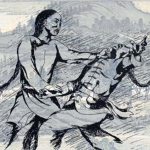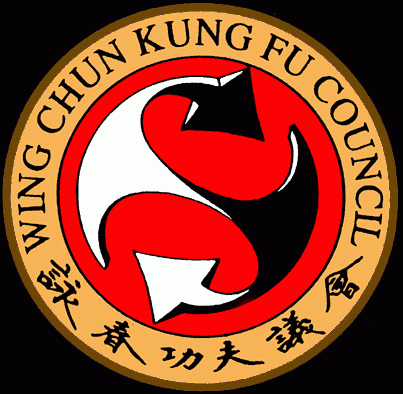_______________________________________________________________________________________________________
History of VingTsun Kung Fu
We practice Ving Tsun Kung Fu as it was passed down to Grandmaster Ip Ching. Some refer to earlier accounts of this history as a legend, because there is little documentation of VingTsun’s beginning. Below is an account of VingTsun’s history, as it was handed down from generation to generation beginning at the Shaolin Temple and continuing to the present day Grandmaster, Ip Ching.
The Shaolin Temple
VingTsun is a Chinese martial art developed over 250 years ago after the change of government from the Ming Dynasty to the Ching Dynasty (Manchurians). Many people opposed the new emperor and rebel groups formed to overthrow the Manchurians. Some of these rebels hid in the Shaolin Temple to study martial arts. The Manchu government soon became fearful of these rebels and sent troops to attack the Shaolin Temple. The Manchurian soldiers were defeated and the temples were safe for the time being. However, the Manchurians later returned when a traitor to this rebel group helped the Manchurians by setting fire to the temple from within. In the confusion, most of the monks and disciples living and training there were killed and the remainder fled for their lives.
The five masters who survived were more determined than ever to defeat the Manchurians. They decided to split up and travel through China. They often disguised themselves and stayed on the move, since the government would have executed them if they were found. Wherever the masters traveled, they rallied the people and prepared them to fight the Manchurians. Through their perseverance and dedication, the five masters set up a network of secret societies, which eventually spread throughout China.
Ng Mui
Ng Mui was one of the five elders of Shaolin who survived the disaster and settled in the province of Quan Sie in Southern China. She eventually met Yim Yee and his daughter Ving Tsun from whom she often bought bean curd. Ng Mui lived with the Yim family and taught their daughter Yim Ving Tsun. When Yim Ving Tsun inquired about the name and origin of the martial art that she was learning, Ng Mui simply replied it was Ving Tsun Kung Fu in order to avoid any unwanted attention from the Chinese Government.
Yim VingTsun
Legend says a local warlord who wished to marry Ving Tsun bullied her and her family. However, her heart belonged to her fiancée, Leung Bok Tau. Ng Mui advised Ving Tsun to tell the warlord she was not prepared to marry any man unless he could beat her in hand-to-hand combat. The warlord accepted the challenge, thinking he could easily defeat Ving Tsun. He also agreed to allow Ving Tsun one year to train before the contest. After Yim Ving Tsun studied Kung Fu under Ng Mui for one year, she easily defeated the warlord and was able to marry Leung Bok Tau. She taught him the Kung Fu she had learned from Ng Mui and continued to call it Ving Tsun Kung Fu.
The Red Junk
For some time, the art of Ving Tsun was passed from generation to generation secretly. Leung Bok Tau taught a number of students, including Wong Wah Bo and Leung Yee Tai. Wong Wah Bo and Leung Yee Tei worked on the Red Junk with a man named Chi Shin. (A junk is an ancient Chinese sailing vessel used throughout Asia for extensive ocean voyages.) It so happened that Chi Shin, who fled from Shaolin, had disguised himself as a cook and was working on the Red Junk. Chi Shin taught the Six-and-a-half-point Long Pole techniques to Leung Yee Tei. Leung Yee Tei and Wong Wah Bo shared what they knew about Kung Fu and the Six-and-a-half-point Pole. They worked hard to improve their techniques and eventually incorporated the Six-and-a-half-point Long Pole into Ving Tsun. Wong Wah Bo and Lung Yee Tai later passed the art on to Dr. Leung Jan.
Dr. Leung Jan
Dr. Leung Jan was an herbalist in Foshan who was known for his compassion, often
Ip Man
Ip Man began learning Ving Tsun when he was 12 years old. The Ip family was very rich and owned a large house. Chan Wah Shun had been teaching Ving Tsun in the Ip family hall. The young Ip Man was very interested in learning Kung Fu and approached Chan for lessons. Chan told Ip Man that people who were rich and came from comfortable surroundings did not make good students of Ving Tsun. However, because Chan Wah Shun was teaching Ving Tsun in the Ip family hall, he could not simply turn down Ip Man’s request. Chan Wah Shun told the boy that he was prepared to teach him for the price of 600 silver pieces. In those days, 600 silver pieces were enough to buy several houses. Chan knew that Ip Man could not raise the money and hoped it would discourage him.
After six months, Ip Man earned the money and presented it to Chan Wah Shun. He was shocked and suspected Ip Man of stealing the money. He brought Ip Man to his father, who explained he had given his son the money so he could study kung fu. Consequently, Ip Man became an official student of Chan Wah Shun, who taught 16 people VingTsun in his lifetime. The eldest Kung Fu brother was Ng Cheung So and the youngest kung fu brother was Ip Man. Ip Man learned from Chan Wah Shun for four years before Chan Wah Shun passed away. Afterward, Ip Man’s eldest Kung Fu brother, Ng Cheung So, continued to train Ip Man (as he had promised to Chan Wah Shun).
Ip Man went to Hong Kong when he was seventeen to attend high school at St. Francis College. By chance, Ip Man met Leung Bik, Dr. Leung Jan’s son, and he started learning Ving Tsun from him. At that time, Hong Kong was a British colony, and the British employed Indian police officers. On his way to school one day, Ip Man and a school friend witnessed an Indian Police Officer beating a Chinese woman. The boys confronted the officer and told him that if the woman had broken the law, he was entitled to arrest her but not to beat her. The officer, thinking Ip Man was only a kid, attacked him. Ip Man responded to the officer’s attack with what appeared to his friend to be a very simple move, but the officer fell down, blood flowing all over his face. Ip Man and his friend quickly escaped by running to their school.
Ip Man’s friend told an older man who lived in his building what had happened. The older gentleman, who was also from Foshan, asked the young man to show him what Ip Man had done. When he saw the move, the old man asked to see Ip Man. The next day, Ip Man and his friend went to see the older gentleman, and the older gentleman asked Ip Man what type of Kung Fu he studied. Ip Man said it was the best Kung Fu in the world, something the older gentlemen would not understand. Ip Man later revealed his Kung Fu was Ving Tsun. The older gentleman said he knew of it, and asked if Ip Man knew of a person named Chan Wah Shun who was teaching it in Foshan. Ip man confirmed that he in fact knew of Chun Wah Shun.
The older gentleman asked Ip Man to perform the Siu Lim Tao form. When Ip Man finished, the old gentleman shook his head and told him that his Siu Lim Tao form was not so good. He then asked Ip Man to perform the Chum Kiu Form, and before he could finish the demonstration, the old gentleman shook his head and said, “not very good.” He then asked Ip Man to demonstrate the Biu Gee form, but Ip Man had not yet learned the Biu Gee form. Still full of pride, he told the old man that Biu Gee was not something he would understand. Ip Man, thinking he could finally teach the old man a lesson, asked him to instead Chi Sao with him, and the old man accepted. After some time of Chi Sao, Ip Man attacked with a move that he thought would surely defeat the old man, but the older man simply threw him to the side. The frustrated Ip Man tried the same attack again, with the same result. Ip Man picked up his jacket and stormed out of the room.
The next day, the older gentlemen asked to see Ip Man again, but Ip Man told his friend no. When the friend reported this back, the older gentleman told him to let Ip Man know that he was Leung Bik (the youngest son of Leung Jan). When the friend informed Ip Man, he immediately went to see Leung Bik. Ip Man then lived with Leung Bik and learned the entire Ving Tsun system from him until Leung Bik died five years later. Leung Bik also gave Ip Man three notebooks, which were passed down to him by his father Dr. Leung Jan (these books are on display in the Ip Man Museum in Foshan, and they include Chinese medicinal herbal formulas from Leung Jan, as well as pressure points).
Ip Man returned to Foshan after completing his schooling. Because Ip Man was rich, he was not required to work. He spent most of his time practicing Ving Tsun, achieving a very high level of skill in the art.
Ip Man started teaching public classes to members in Hong Kong in the 1950’s. He had many famous students, including his two sons Ip Chun and Ip Ching. Many students moved to other parts of the world before they could learn the whole Ving Tsun fighting system. It was very hard to get into Hong Kong University (the only university in Hong Kong at that time), and many of his students moved away to attend other universities around the world. They tried learning VingTsun on their own through books, videos, and personal experiences, but without Ip Man’s guidance, they did not receive the whole system of Ving Tsun. Ip Ching says this is why it can be said that there are many true disciples of Ip man who never learned the whole system from him.
Ip Ching
Ip Ching was born in Foshan, China in 1936. He is the second eldest son of Ip Man. He began training with his father at the age of seven. Soon after Ip Ching began learning Ving Tsun, His father traveled to Hong Kong in search of a better life for his family, because the government in mainland China was eroding and would soon fall to communism. Ip Ching remembered his father’s lessons and worked hard to keep and improve his martial skill. After he graduated college in Canton In 1962, Ip Ching moved to Hong Kong to live with his father, where he then resumed training under his father’s guidance. Ip Man taught from his home, which is where Ip Ching resides today. Ip Ching avidly observed his father’s teachings, thus achieving tremendous insight into his father’s teaching methods.
He assisted his father with teaching students until his father died in 1972. He then continued teaching whilst running a manufacturing business until he retired in 1994. After retiring, he began teaching Ving Tsun full-time. Ip Ching formed the Ving Tsun Ip Ching Athletic Association and now teaches students from around the world at the association’s headquarters in Hong Kong.
Pass on the tradition — preserve this Chinese art and its Rules of Conduct.
___________________________________________________________________________________________________________________________________________________________
___________________________________________________________________________________________________________________________________________________________





